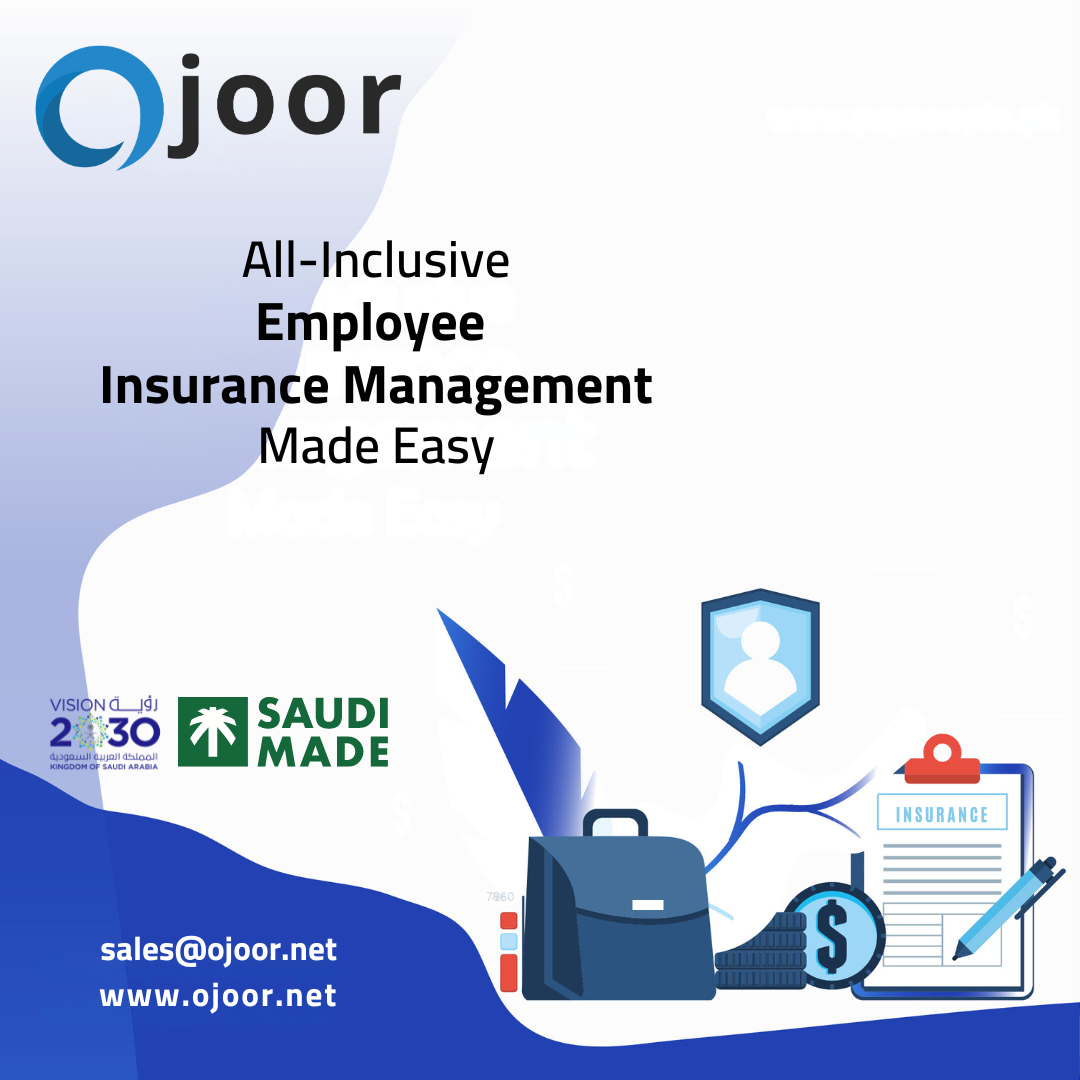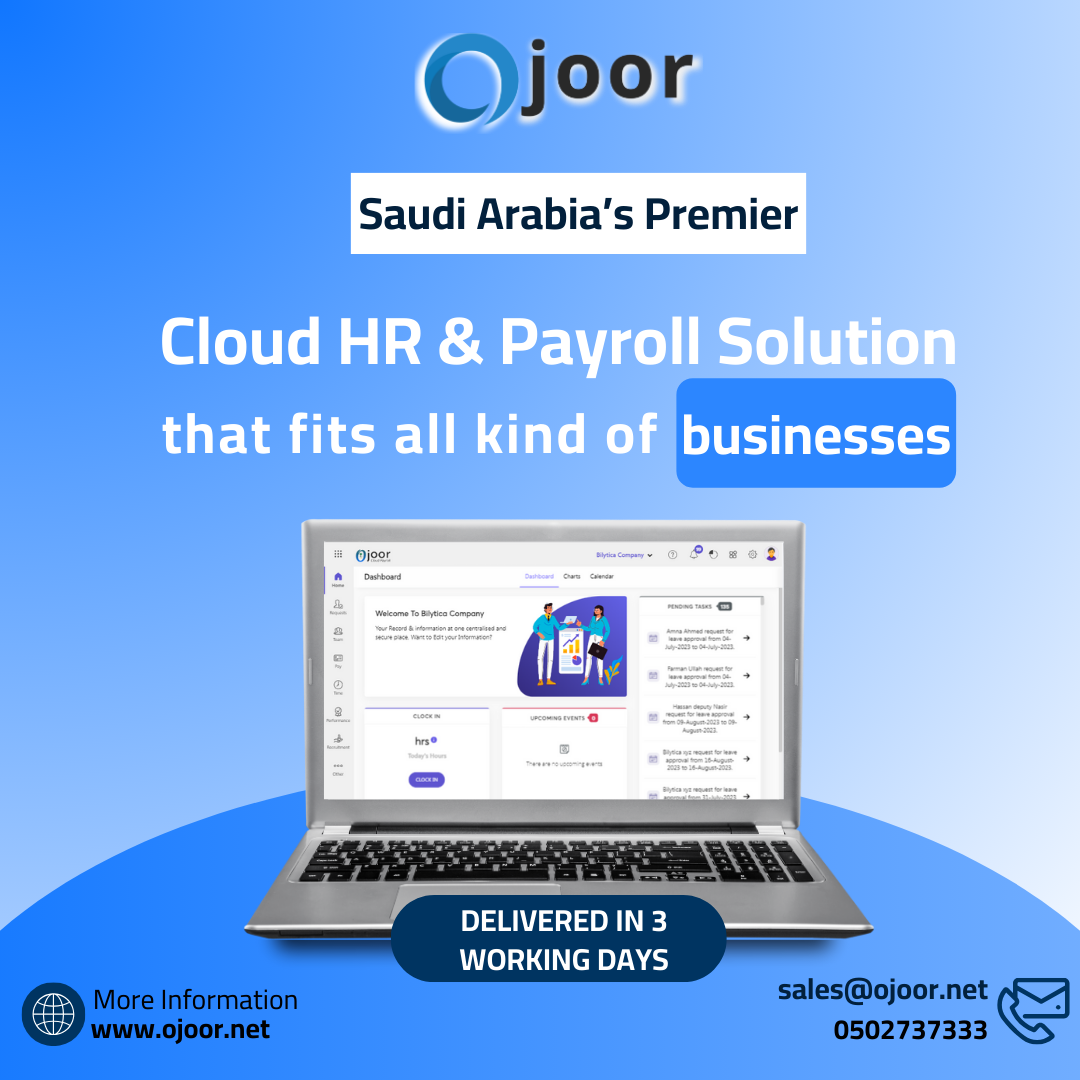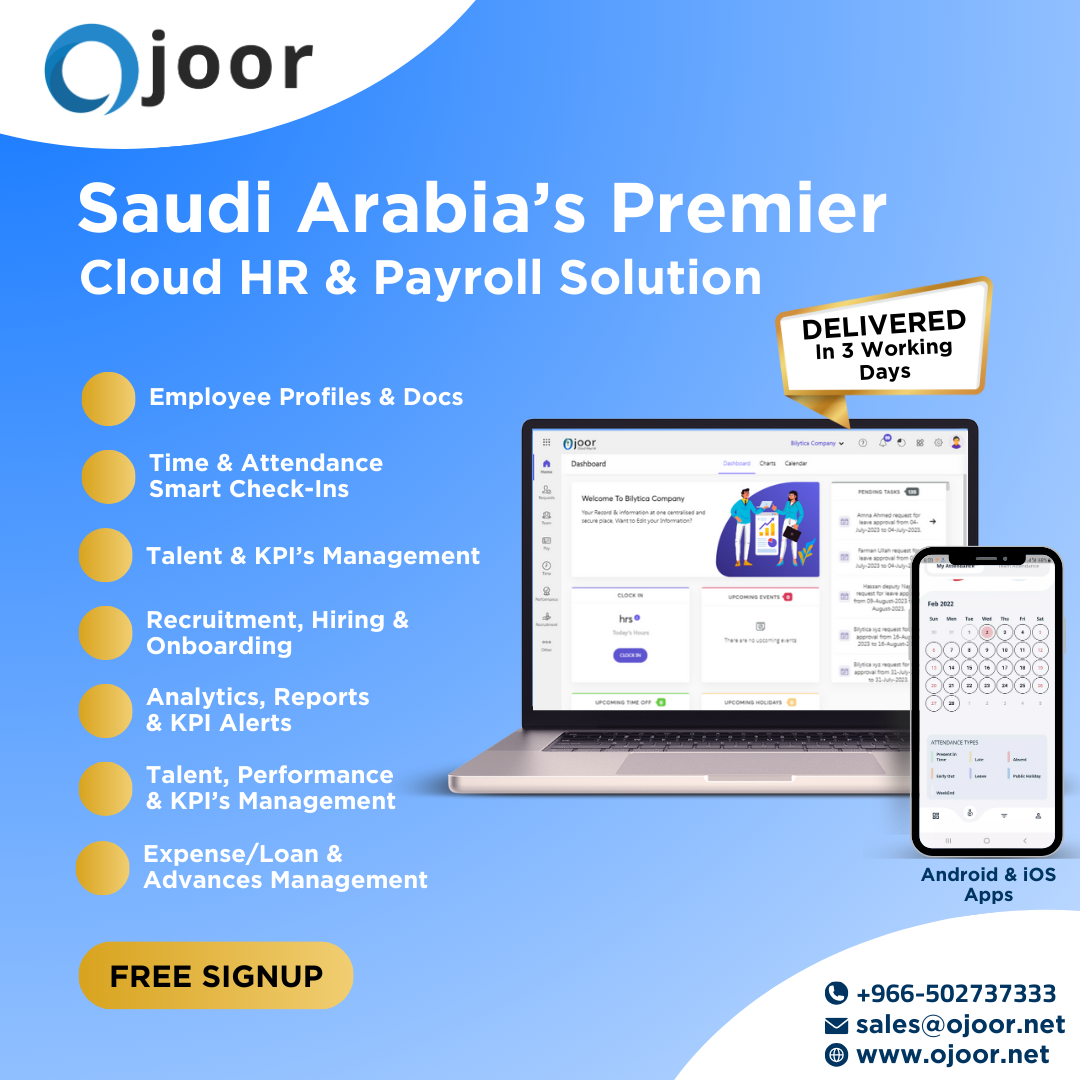Ojoor # 1 is one of the top HR system managing employee data efficiently and accurately is essential for HR departments to fulfill their strategic role in supporting organizational objectives. Human Resource (HR) systems play a crucial role in streamlining employee data management processes, enabling HR professionals to effectively capture, organize, and utilize employee information. In this article, we’ll explore how HR systems streamline employee data management, the benefits they offer, and best practices for implementation.
Click to Start Whatsapp Chatbot with Sales
Mobile: +966547315697
Email: sales@Ojoor.net
Ojoor #1 HR system

How does an HR system streamline employee data management?
Centralized Data Repository
One of the primary functions of an HR system is to serve as a centralized repository for storing employee data. Instead of relying on disparate spreadsheets, paper files, or multiple systems, HR systems consolidate all employee information into a single, accessible platform. This centralized approach ensures data integrity, eliminates redundancy, and provides a unified view of employee records, including personal information, employment history, performance evaluations, training records, and more.
Standardized Data Entry
HR systems enforce standardized data entry practices, ensuring consistency and accuracy in employee records. By establishing predefined data fields, drop-down menus, and validation rules, HR systems guide HR professionals and managers in entering employee information correctly. This standardized approach minimizes errors, reduces data entry time, and enhances data quality, ensuring that employee records are complete, up-to-date, and compliant with organizational standards and regulatory requirements.
Automated Data Capture
HR systems automate the process of capturing employee data through various channels, such as online forms, self-service portals, and integration with other systems. For example, during the onboarding process, new hires can input their personal information directly into the HR system through digital forms, eliminating the need for manual data entry by HR staff. Similarly, HR systems can integrate with recruitment platforms, payroll systems, and time-tracking software to capture relevant employee data seamlessly, further streamlining data management processes.
Workflow Automation
HR system automate workflow processes related to employee data management, such as employee onboarding, status changes, and offboarding. Through workflow automation, HR professionals can create predefined workflows with triggers, notifications, and approval mechanisms to ensure that each step of the process is executed efficiently and according to established procedures. For example, when an employee submits a request for a change in personal information, such as a name change or address update, the HR system can route the request to the appropriate manager for approval, update the employee record accordingly, and notify relevant stakeholders of the change.

How does an HR system streamline employee data management?
Self-Service Capabilities
Payroll Management offers self-service capabilities that empower employees to manage their own data, reducing the administrative burden on HR staff. Through self-service portals, employees can access their personal information, update contact details, view pay stubs, request time off, and enroll in benefits without requiring direct assistance from HR personnel. This self-service approach not only improves employee satisfaction and engagement but also frees up HR resources to focus on strategic initiatives rather than routine administrative tasks.
Role-Based Access Controls
HR systems implement role-based access controls to regulate access to employee data and ensure data security and confidentiality. By assigning different levels of access privileges based on job roles and responsibilities, HR systems prevent unauthorized users from viewing or modifying sensitive employee information. For example, HR managers may have full access to employee records, while line managers may have restricted access limited to their direct reports’ information. Role-based access controls help organizations comply with data privacy regulations and safeguard employee data from unauthorized access or misuse.
Data Security and Compliance
HR systems employ robust data security measures and compliance mechanisms to protect sensitive employee information and ensure regulatory compliance. These measures may include encryption, data masking, audit trails, and regular security audits to identify and mitigate potential vulnerabilities. HR systems also support compliance with data privacy regulations, such as the General Data Protection Regulation (GDPR) and the Health Insurance Portability and Accountability Act (HIPAA), by implementing privacy controls, consent management features, and data retention policies.
Reporting and Analytics
HR systems provide robust reporting and analytics capabilities that enable HR professionals to extract actionable insights from employee data. With customizable reporting tools and dashboards, HR professionals can generate a wide range of reports, such as headcount reports, turnover metrics, diversity analytics, and performance trends. By analyzing these reports, HR departments can identify patterns, trends, and areas for improvement in workforce management practices, enabling data-driven decision-making and strategic planning.
Integration with Other Systems
Recruitment process integrates seamlessly with other business systems, such as payroll, finance, and timekeeping software, to ensure data consistency and interoperability across the organization. Through integration, employee data flows seamlessly between different systems, eliminating manual data entry, reducing errors, and improving data accuracy. For example, when an employee’s payroll information is updated in the HR system, the changes are automatically reflected in the payroll system, ensuring that employees are paid accurately and on time.
Scalability and Flexibility
HR systems are scalable and adaptable to accommodate the changing needs and growth of organizations. Whether an organization is a small startup or a large enterprise, HR systems can scale to handle increasing volumes of employee data and support additional features and functionalities as needed. Moreover, HR systems are configurable, allowing organizations to customize workflows, data fields, and user interfaces to align with their unique business processes and requirements.
Conclusion
In conclusion, HR systems play a critical role in streamlining employee data management processes, from data capture and entry to storage, retrieval, and analysis. By centralizing employee data, standardizing data entry practices, automating workflows, and enforcing security controls, HR systems improve efficiency, accuracy, and compliance in HR operations. With self-service capabilities, reporting tools, and integration with other systems, HR systems empower organizations to optimize workforce management practices, drive strategic decision-making, and achieve their business objectives in a digital age.
Click to Start Whatsapp Chatbot with Sales
Mobile: +966547315697
Email: sales@Ojoor.net
How does an HR system streamline employee data management? similar software solutions prices were updated on 2024-07-25T17:32:45+00:00 in Saudi Arabia in Mecca, Medina, Riyadh, Khamis Mushait, Yanbu, Jeddah, Dammam, Unaizah, Uqair, Ha’il, Ta if, Al Bahah, Dhahran, King Abdullah Economic City, Najran, Diriyah, Qatif, Khafji, Jubail, Abqaiq, List of Cities and Towns in Saudi Arabia, Ras Tanura, Turubah, Jazan Economic City, Knowledge Economic City, Medina, Khobar, Abha, Tabuk, Saudi Arabia, similar software solutions prices were updated on 2024-07-25T17:32:45+00:00 We also provide in Saudi Arabia services solutions company in Hafar Al-Batin, Udhailiyah, Al-Awamiyah, Hofuf, Hautat Sudair, Buraidah, Tayma, Duba, ‘uyayna, Saihat, Al-Kharj, Al-ula, Jizan, Rumailah, Ar Rass, Arar, Shaybah, Al Majma’ah, Rabigh, Dhurma, Haradh, List of Saudi Cities by Gdp Per Capita, Badr, Sudair Industrial City, Baljurashi, Shaqraa, Al-Khutt, Habala, Ad Dawadimi, Dawadmi, Layla, similar software solutions prices were updated on 2024-07-25T17:32:45+00:00 Price is SAR 100 and this was updated on updated on 2024-07-25T17:32:45+00:00 similar How does an HR system streamline employee data management? software solutions prices were updated on 2024-07-25T17:32:45+00:00 in Saudi Arabia in Haql, Afif, Al-Abwa, Farasan, Al-Jaroudiya, Thadig, Al-Thuqbah, Al Wajh, Almardmah, Al-Zilfi, Muzahmiyya, Prince Abdul Aziz Bin Mousaed Economic City, Tharmada’a, Skaka, Um Al-Sahek, Sharurah, Tanomah, Bisha, Dahaban, Al Qunfudhah, Qurayyat, Saudi Arabia, Ha’ir, as Sulayyil, Al Lith, Turaif, Al-Gway’iyyah, Samtah, Wadi Ad-Dawasir, Az Zaimah, Safwa City, Jalajil, Harmah, Mastoorah, Hotat Bani Tamim, Jabal Umm Al Ru’us, Rafha, Qaisumah, Al-Ghat, Hajrah, Al-Hareeq. Excerpt: Jeddah (also spelled Jiddah, Jidda, or Jedda; Arabic: Jidda) is a Saudi Arabian city located on the coast of the Red Sea and is the major urban center of western Saudi Arabia similar software solutions prices were updated on 2024-07-25T17:32:45+00:00 Price is SAR 100 and this was updated on updated on 2024-07-25T17:32:45+00:00
20-2-2024



